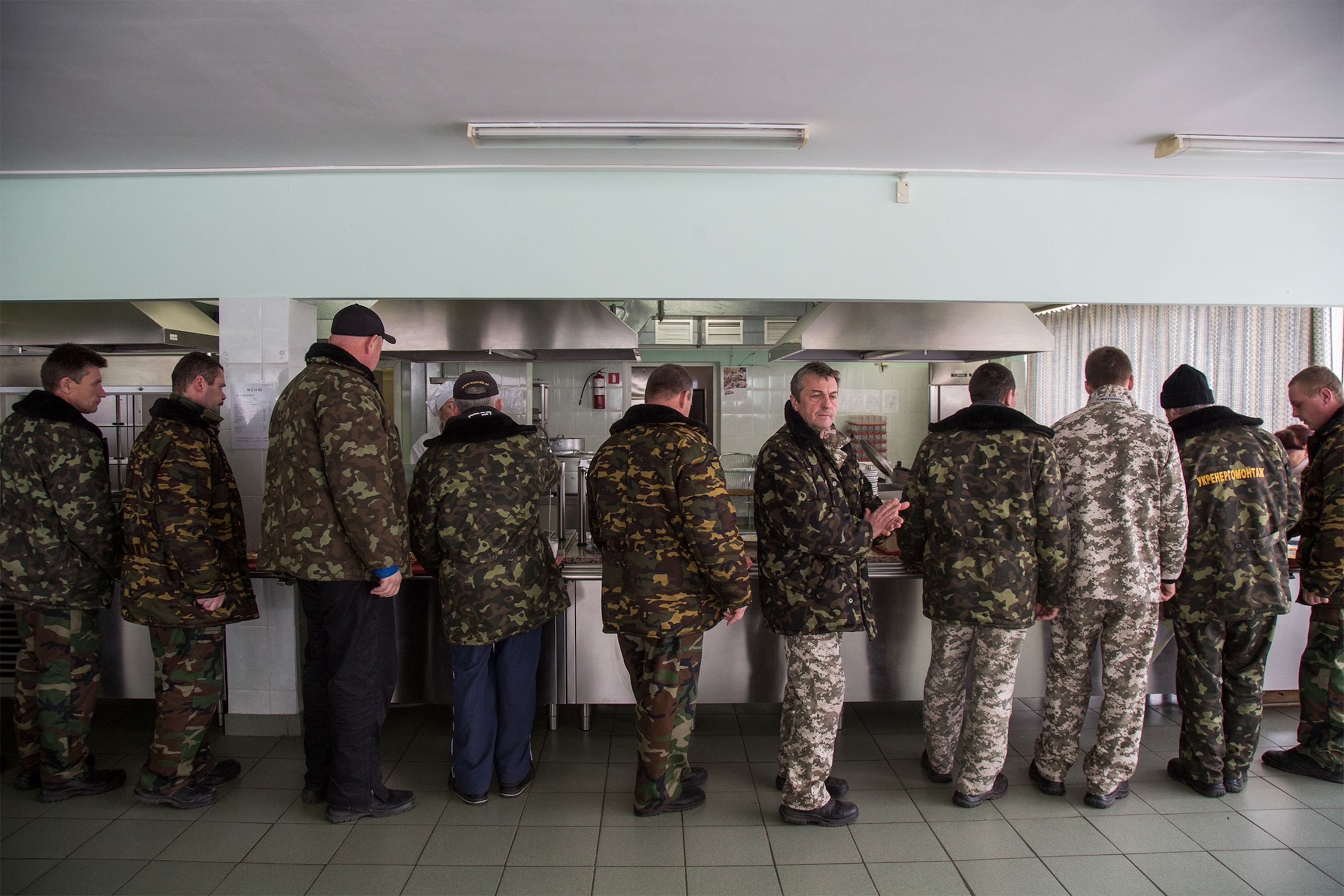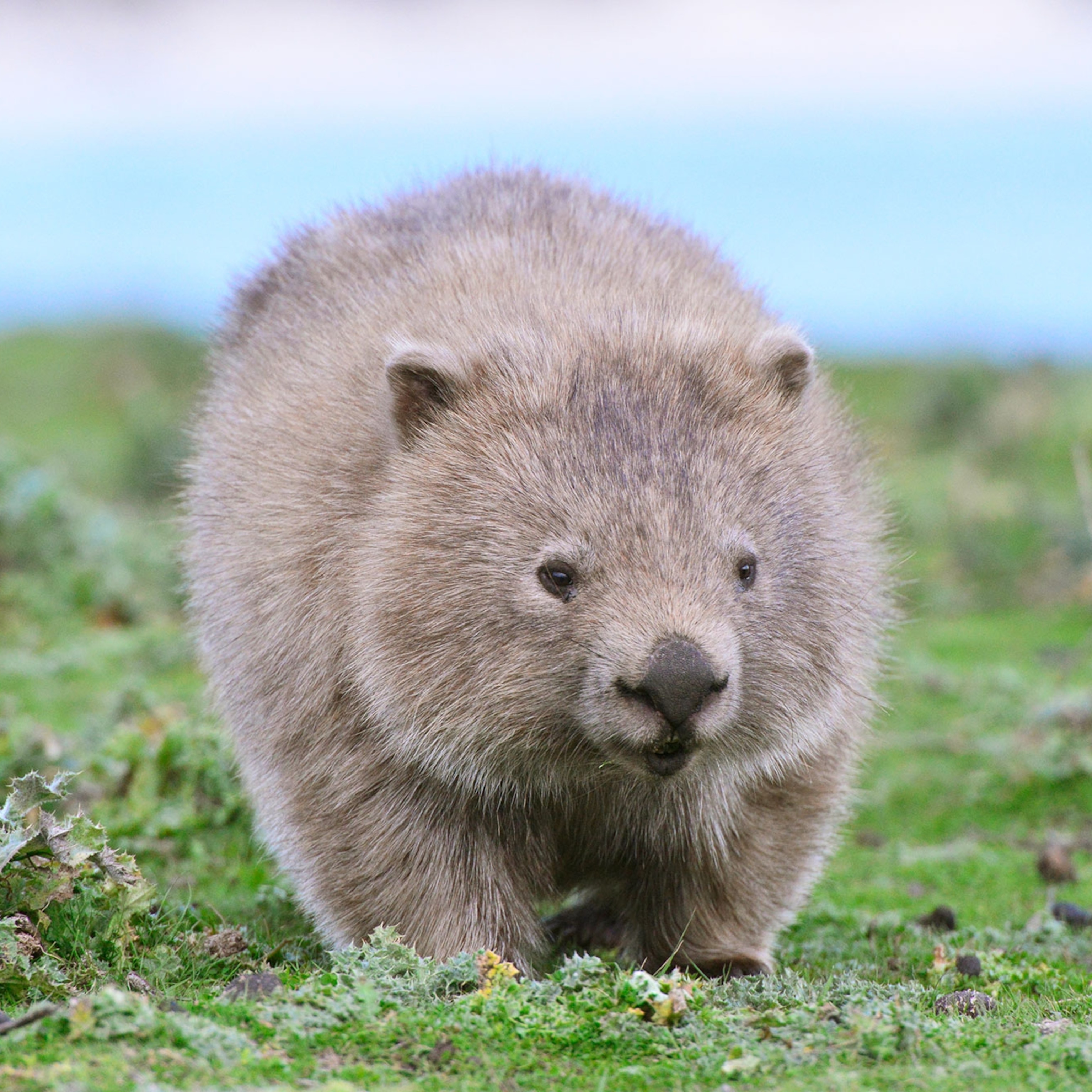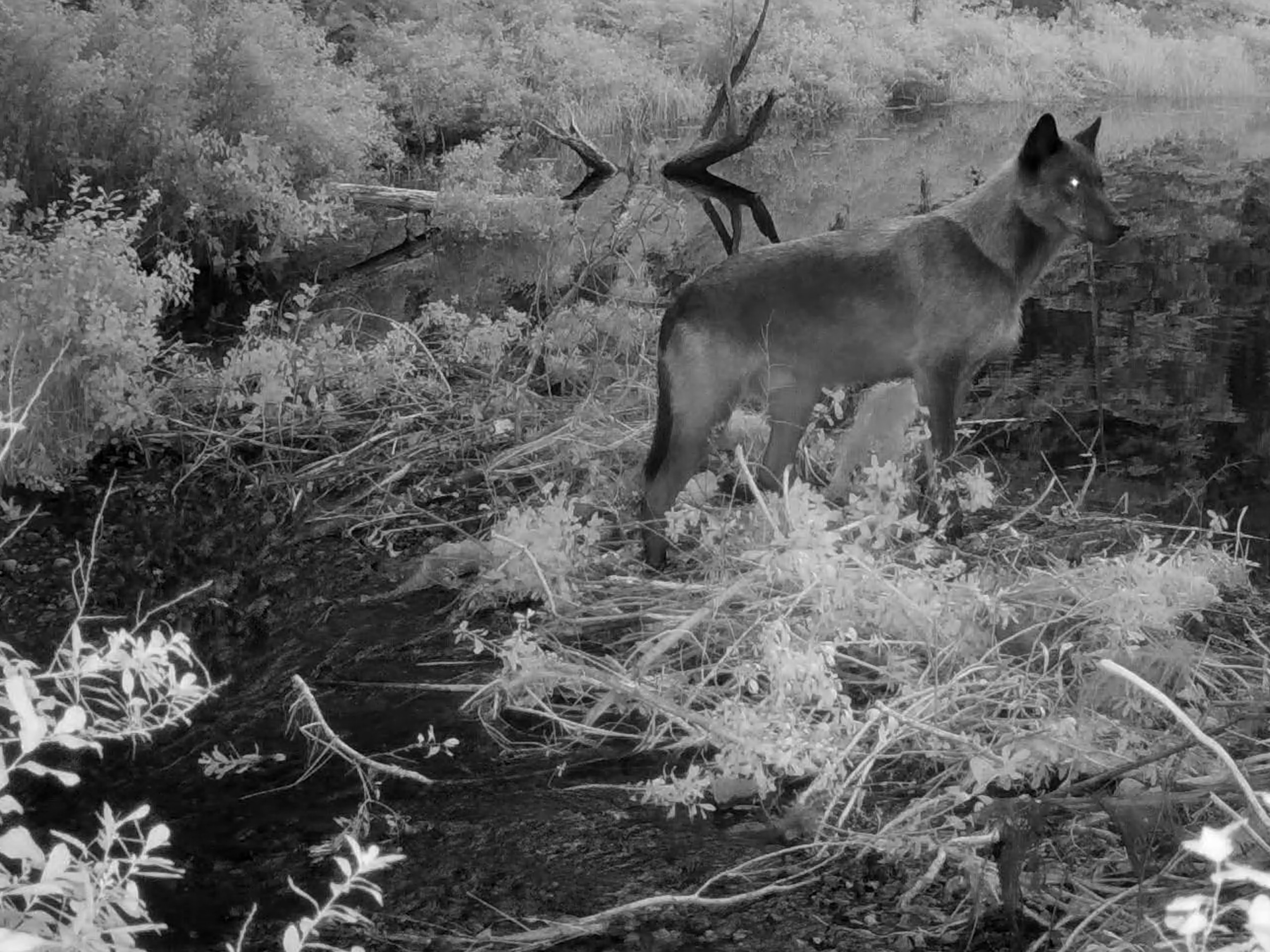Animals Rule Chernobyl Three Decades After Nuclear Disaster
Three decades later, it’s not certain how radiation is affecting wildlife—but it’s clear that animals abound.
Chernobyl, Ukraine — Marina Shkvyria watches for animal tracks as she walks toward an abandoned village in the Chernobyl Exclusion Zone, the area sealed to the public after a nuclear power plant exploded here 30 years ago, on April 26, 1986. Spotting one, she crouches and runs her finger over the toes of a wolf print in the loose sand.
It may seem strange that Chernobyl, an area known for the deadliest nuclear accident in history, could become a refuge for all kinds of animals—from moose, deer, beaver, and owls to more exotic species like brown bear, lynx, and wolves—but that is exactly what Shkvyria and some other scientists think has happened. Without people hunting them or ruining their habitat, the thinking goes, wildlife is thriving despite high radiation levels.
Shkvyria is a wolf expert at the Ukraine’s National Academy of Sciences, and one of a handful of scientists following the fate of Chernobyl’s wildlife. She discovered the wolf pack near the village using unorthodox, but cheap, methods. “We came down here late last spring and howled, and the young wolf pups howled back from the top of that hill,” she says with a mischievous smile.
So far, scientists are divided on how well the animals are really doing in the exclusion zone, which straddles Ukraine and Belarus, says biologist Jim Beasley of the University of Georgia’s Savannah River Ecology Laboratory, who has been studying wolves there with grant support from the National Geographic Society Committee for Research and Exploration.
In a new study released Monday, Beasley says that the population of large mammals on the Belarus side has increased since the disaster. He was shocked by the number of animals he saw there in a five-week survey. Camera traps captured images of a bison, 21 boars, nine badgers, 26 gray wolves, 60 raccoon dogs (an Asian species also called a tanuki), and 10 red foxes. “It’s just incredible. You can’t go anywhere without seeing wolves,” he says. (See a video about wolves taking back Chernobyl.)
Radiation, he argues in the study, is not holding back Chernobyl wildlife populations.
Signs of Life
While researching this story, one biologist who studies Chernobyl told me I would not see any roadkill in the exclusion zone—and would be lucky to hear any birds or see any animals.
So when I visited in early April, I made a point of counting every animal I saw. Even in the busy area between the main guard post and the remains of the Chernobyl power plant, signs of wildlife were everywhere.
Walking along sandy firebreaks used as forest highways with Shkvyria and her colleague, vole specialist Olena Burdo, we found the tracks of wolf, moose, deer, badger, and horses. I counted scores of birds: ravens, songbirds, three kinds of birds of prey, and dozens of swans paddling in the radioactive cooling pond.
In a herd of wild Przewalski's horses, a rare and endangered subspecies of wild horse introduced to the preserve, I counted an adult male, two adult females, and two juveniles. They charged toward us across a large shaggy field, their brush-like black manes standing straight up from taupe bodies, and took a long look at us as disused power lines swayed in the distance.
We also saw the handiwork of beavers—everywhere. The growth of their populations in recent years may be one of the most important things to happen in the zone’s ecology. After placing the camera trap on the trunk of a pine, Shkvyria, Burdo, and I walk along a path, eventually entering a village of rotting wooden cottages slowly being swallowed up by scrubby pines, birches, and willows. Here the earth had been torn up by a sounder of foraging boars.
On the opposite end of the village, a perfectly straight Soviet canal still drained the low-lying land. The bright chips of a freshly chewed birch still lay at the base of a tree. Felled birches, some three feet around, lay across the water, up and down the length of the ditch.
“Literally three weeks ago that tree was still standing,” Shkvyria says, pointing to the pale chips. “The beaver population is growing. Beavers can return it to being a little bit more wild,” she says. Eventually, as the beavers fell trees, the land will return to bogs. “It will become like it was a hundred years ago.”
“The beaver in Ukraine is exactly like the elephant in Africa: it completely changes the look of the landscape.”
Debate Continues
The combined territory of the exclusion zones in Ukraine and Belarus caused by the Chernobyl disaster is a little more than 1,600 square miles, making it one of the largest truly wild sanctuaries in Europe.
But what it means for animals to be rebounding in Chernobyl has become the scientific equivalent of a boxing match, with the latest blow delivered Monday when Beasley put forward a study in the journal Frontiers in Ecology and the Environment.
His study catalogued 14 species of mammals, and “found no evidence to suggest that their distributions were suppressed in highly contaminated areas within the Chernobyl Exclusion Zone.” The abstract ends pointedly. “These data support the results of other recent studies, and contrast with research suggesting that wildlife populations are depleted within the CEZ.”
Anders Pape Møller, a Danish scientist at the University of Paris-Sud who has studied swallows in nuclear environments, says his research shows otherwise. “These animals in Chernobyl and Fukushima live 24 hours a day in these contaminated sites. Even if the actual dose for one hour is not extremely high, after a week or after a month, it adds up to a lot. These effects are certainly at a level where you could see dramatic consequences.”
His research with biologist Timothy Mousseau has shown that voles have higher rates of cataracts, useful populations of bacteria on the wings of birds in the zone are lower, partial albinism among barn swallows, and that cuckoos have become less common, among other findings. Serious mutations, though, happened only right after the accident.
Both sides agree that radiation is bad for people and bad for animals; the debate is over how bad and whether it has caused populations to decline.
The debate among scientists over the effects of low levels of ionizing radiation on wildlife and humans is heated and political, especially after the Fukushima catastrophe five years ago. With 30 years of history now to draw from, Chernobyl is the proving ground. (Read "The Long Shadow of Chernobyl" for a view of the site 20 years after the disaster.)
Racking Up Radiation
This year will mark the half-life of cesium-137, one of the most widespread and dangerous of the radionuclides released. That means the amount of cesium has dropped by about half in the 30 years since the accident, decaying into the short-lived barium-137m.
For animals, radioactive material enters the system through the food chain.
As Shkvyria places a camera trap on a pine tree near the wolf hillock, Burdo explains. “Mushrooms concentrate radiation. Voles love mushrooms. When they eat contaminated mushrooms, they concentrate the radiation in their bodies. When wolves eat voles, they pick up the contamination.”
But the level of radionuclide contamination in an animal depends both on concentrations in its habitat and on the diet and behaviors of the animal, she says. Radiation deposited by fallout from Chernobyl has been measured as far away as Norway in reindeer, but it is patchily spread in the exclusion zone.
Wolves, in particular, may get at least some protection from radiation because they have a big territory and move around a lot, even outside the zone into cleaner areas.
“I would argue that for many of those species [the effects of radiation], even if they’re there, probably aren’t enough to suppress populations to the point where they can’t sustain themselves,” says Beasley. In the zone, “humans have been removed from the system and this greatly overshadows any of those potential radiation effects.”
Essentially, this means that human populations have a bigger negative impact than radiation.
Poaching and Protecting
In his research lab in Slavutych, the surreal little Soviet town built right after the disaster for the physicists, workers, and scientists affiliated with Chernobyl, Sergey Gaschak emphatically agrees. The wildlife population has grown “dramatically,” says Gaschak, who has worked in the zone for the past 30 years. (Read about people in the Chernobyl exclusion zone in "The Nuclear Tourist.")
“Before the accident it was an area absolutely populated by people.” But he says that there is a “myth” that new animals have started to appear in the exclusion zone. “This is absolutely not true. Almost all the species we have now, we had before the accident, just in lower densities.”
Gaschak has been using camera traps for a few years now and has a more complete list than almost any other researcher on the Ukrainian side. “We have all large mammals: red deer, roe deer, wild boar, moose, horse, bison, brown bear, lynx, wolves, two species of hare, beaver, otter, badger, some martins, some mink, and polecats,” he says, without taking a breath, adding that there are may be 20 other mammals including bats and also ten or more species of big birds, including hawks, eagles, owls, storks, and swans.
Backing up the camera traps, Shkvyria has gone into the old Soviet archives, stacks of paper reports shelved in the National Academy of Sciences. What she found agrees with Gaschak’s research, and tempers international excitement over a population boom in the zone.
“We looked through official state censuses of all hunted species, and it was interesting for us to not see a really big difference between the 1960s, 1980s, 1990s, and today. It was a stable structure—40, 50, 60 wolves, not more” on the Ukrainian side, she says. “Illegal hunting still influences it, so it’s a dynamic system, but it’s more or less stable.”
Indeed, the people living on the edge of the zone, even the poachers, are a good barometer to anecdotally measure increases in the number of wildlife, since animals do not need a pass to enter or leave the zone, as one villager put it.
“There are more animals now than there were 30 years ago. We have horse, deer, moose, wolves, boar, hare and others,” says Anatoly Tsiganenko, standing in the warm afternoon sun next to his neighbor’s oily motorcycle repair garage in the village of Radcha, just a mile from the border with Belarus and a few hundred yards from the edge of the exclusion zone. Last fall, he says, he saw a wolf walking through his neck of the village. He guesses it was around 140 pounds and stood well above his knees.
While it helps to confirm that there is more wildlife today than right before the accident, it also means there’s more poaching, especially on the Ukrainian side. A decree by Ukrainian President Petro Poroshenko that would convert the exclusion zone into a nature preserve aims to help solve that problem, though Ukrainian researchers fear it will in the end weaken the protected status.
“Illegal fishing and hunting sometimes happens. It’s at their own risk to do this. Unfortunately, we cannot control all such cases,” says Hanna Vronska, the acting Minister of Ecology and Natural Resources of Ukraine, who hopes the new status will make it easier to raise money from international donors for more rangers.
While Beasley stops short of calling the landscape “ruined” by radioactive contamination, he knows that it will be there for centuries or millennia, in the case of plutonium. But, without humans around, his findings show that the wildlife seems to be doing all right.
“The preliminary density estimates that we are seeing suggest that in Chernobyl the density of wolves is much, much higher than even Yellowstone.”















